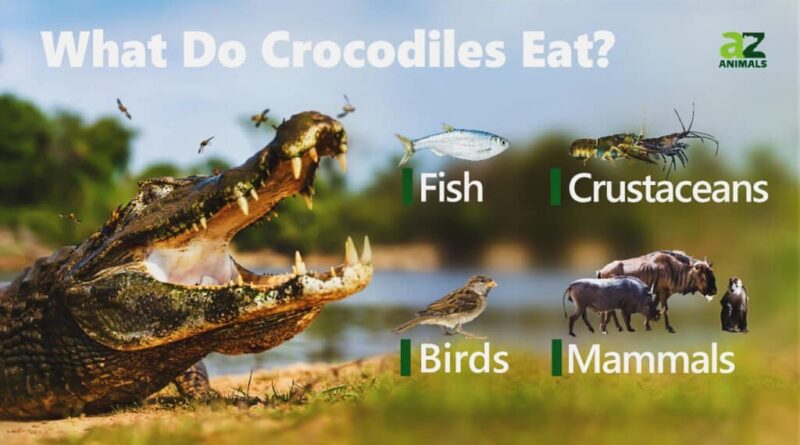Nile Crocodile Diet Variations
Nile Crocodile Diet Variations The Nile crocodile (Crocodylus niloticus) is one of Africa’s most formidable predators, recognized for its immense size, strength, and adaptability. Found in various water bodies across the continent, from rivers to lakes and marshlands, the Nile crocodile plays a crucial role in its ecosystem as both predator and scavenger. One of the most fascinating aspects of this apex predator is the variation in its diet across different habitats, seasons, and stages of life. Understanding these dietary shifts provides deeper insights into their survival strategies and ecological importance.
General Diet of Nile Crocodiles
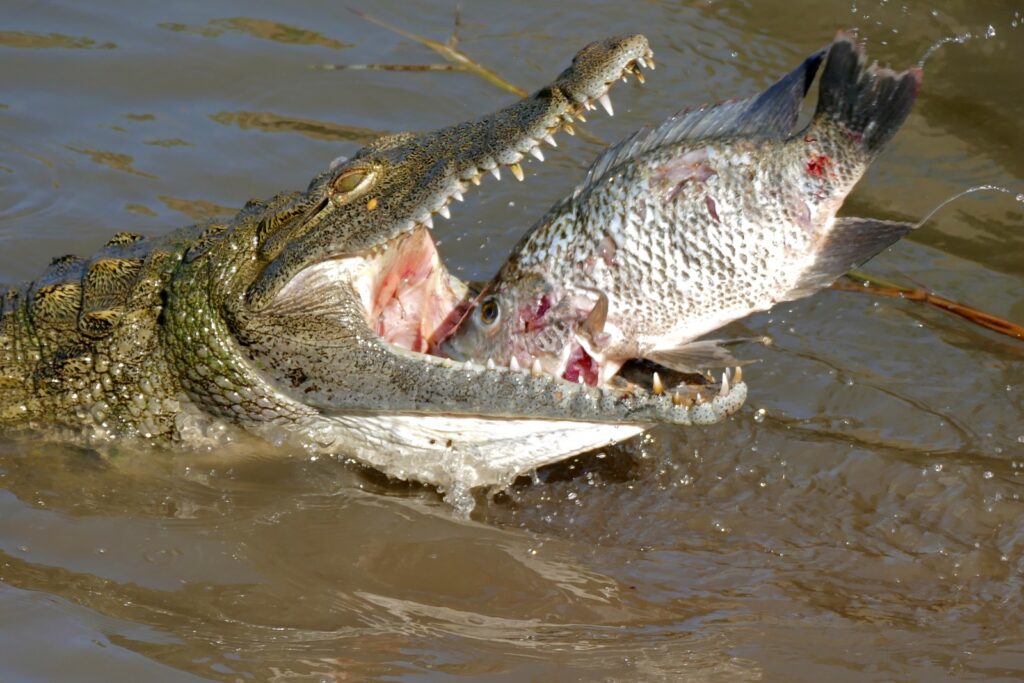
Nile crocodiles are primarily carnivorous, feeding on a broad range of animals depending on what is available in their habitat. Fish make up a significant portion of their diet, especially in freshwater environments. They are skilled ambush predators, lying in wait beneath the water’s surface before striking at unsuspecting prey. In addition to active hunting, these crocodiles are opportunistic scavengers, feeding on carrion when available. Their powerful jaws and digestive systems allow them to consume almost any part of an animal, making them highly effective at utilizing available resources.
Dietary Variations Based on Habitat
The Nile crocodile’s diet can vary significantly depending on its habitat. In freshwater environments such as rivers, lakes, and swamps, fish are the main source of food. These habitats provide abundant prey, and seasonal fish migrations can create periods of increased feeding opportunities. However, during the dry season, when fish may become scarce, crocodiles may rely on scavenging or switch to hunting land-based animals that come to drink at the water’s edge.
Here’s a table summarizing the key aspects of Nile Crocodile Diet Variations:
| Category | Dietary Characteristics |
|---|---|
| General Diet | Carnivorous, primarily feeding on fish, mammals, and birds. Opportunistic scavenger, consuming carrion when available. |
| Freshwater Habitats | Diet mainly consists of fish, with seasonal shifts depending on prey availability (e.g., during dry and wet seasons). |
| Brackish Waters & Estuaries | Feeds on marine life such as crabs, seabirds, and fish. Adapts to saltwater-tolerant prey in coastal environments. |
| Terrestrial Prey near Water Sources | Hunts land mammals like antelope, zebra, and buffalo when they approach water bodies. Opportunistic during migrations. |
| Diet Based on Age | Juveniles: Insects, amphibians, small fish. Sub-adults: Small mammals, larger fish. Adults: Large mammals (buffalo, zebra, etc.), fish. |
| Seasonal Variations | Wet Season: Focus on aquatic prey, mainly fish. Dry Season: Switch to scavenging and hunting land-based prey. |
| Human Impact | In areas with human interference, may feed on livestock, human waste, and fishing byproducts, leading to human-wildlife conflict. |
| Interspecies Competition | Competes with lions, hyenas, leopards for prey. May scavenge or steal kills. Uses ambush tactics to avoid direct competition. |
| Unique Behaviors | Cannibalism: Larger crocodiles prey on smaller ones. Cooperative Hunting: Group efforts to capture large prey like wildebeest. |
| Rare Prey | Occasionally attacks dangerous animals like hippopotamuses, although this is rare. Opportunistic in targeting challenging prey. |
In brackish waters and estuaries, where saltwater mixes with freshwater, Nile crocodiles exhibit different dietary behaviors. These areas offer access to marine life such as crabs, seabirds, and various fish species, allowing crocodiles to diversify their diet. Their ability to tolerate some degree of saltwater broadens their feeding options in coastal areas, though they tend to favor brackish over purely saltwater environments.
In areas where terrestrial prey such as antelope, zebra, or buffalo frequent the water’s edge, Nile crocodiles take advantage of their proximity to shorelines. During the great migrations, crocodiles in places like the Serengeti are known to ambush and prey on large mammals crossing rivers. Their incredible strength and agility in water make them formidable hunters in such scenarios.
Diet Based on Age and Size
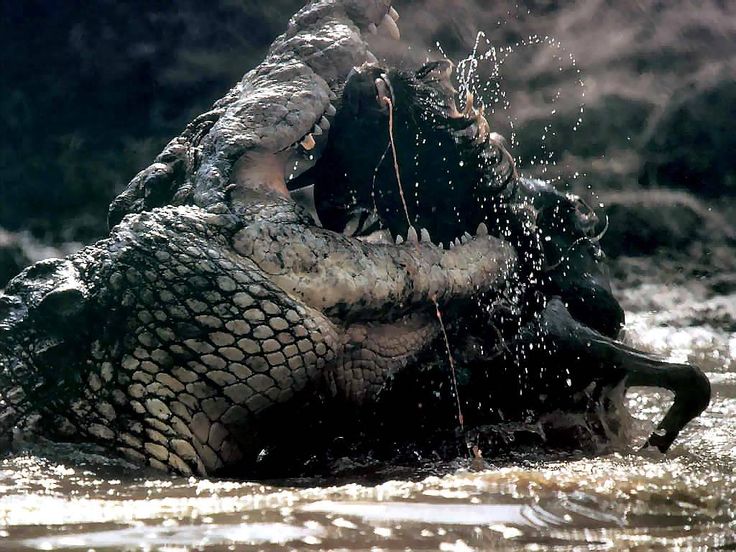
The diet of a Nile crocodile changes as it matures. Juvenile crocodiles, which are small and vulnerable, feed primarily on insects, amphibians, and small fish. At this stage, their nutritional needs are high, as they must grow rapidly to avoid becoming prey themselves. As they mature into sub-adults, they begin to take on larger prey, such as small mammals and bigger fish, as their hunting skills develop.
Adult crocodiles are at the top of the food chain, capable of taking down large prey like buffalo, zebras, and even young hippopotamuses. Their size and strength allow them to dominate their environment, making them apex predators. In some cases, adult crocodiles have been known to attack and consume large animals, including those dangerous to other predators.
Seasonal and Environmental Factors Affecting Diet
The seasonal availability of prey has a significant influence on the Nile crocodile’s diet. During the wet season, when water levels are high and fish are abundant, crocodiles primarily feed on aquatic life. However, in the dry season, as water sources shrink and fish become scarce, crocodiles must adapt. They may switch to scavenging or hunting larger mammals that are forced to the remaining water sources.
Human activities such as agriculture, fishing, and urbanization also impact the Nile crocodile’s diet. In areas where humans have encroached on crocodile habitats, these reptiles have adapted by feeding on livestock, human waste, and even discarded fishing byproducts. This can lead to conflict between humans and crocodiles, especially in areas where crocodiles have become accustomed to easy meals near human settlements.
Interspecies Competition and Its Influence on Diet
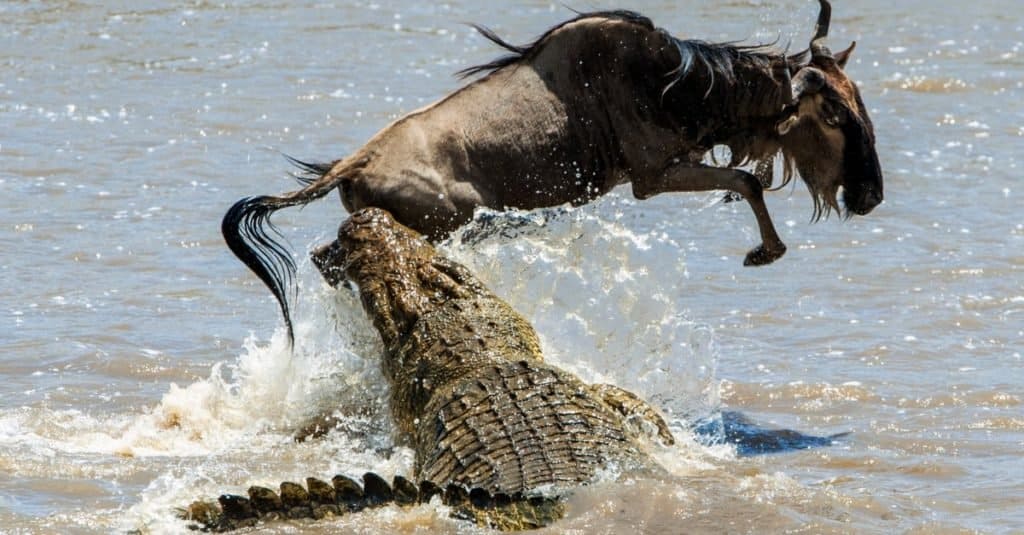
Nile crocodiles share their environment with other predators, such as lions, hyenas, and leopards. In regions where prey is scarce, this competition can force crocodiles to adjust their diet or feeding habits. In areas where prey is abundant, crocodiles may focus more on aquatic prey and avoid direct competition with terrestrial predators. However, in times of scarcity, they may scavenge from kills made by these other predators or even steal food when the opportunity arises.
Crocodiles have a unique advantage in that they can go long periods without food, allowing them to survive during lean times when other predators may struggle. Their ability to adapt to varying prey availability ensures their dominance in both water and land-based food chains.
Unique Dietary Behaviors
One of the most intriguing aspects of Nile crocodiles is their occasional practice of cannibalism, where larger crocodiles prey on smaller ones. This behavior is most commonly observed in areas with limited food resources or high crocodile densities. Cannibalism helps regulate the population and reduces competition for food among individuals.
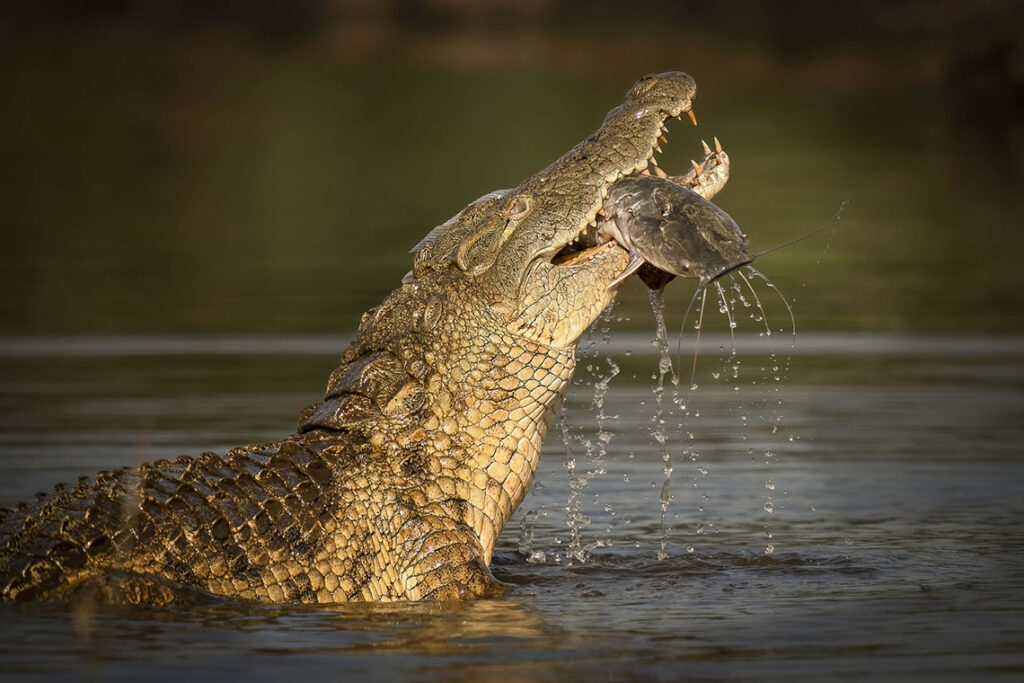
In some cases, Nile crocodiles exhibit cooperative hunting behaviors, especially when targeting large prey such as wildebeest or zebras during river crossings. Multiple crocodiles may work together to overpower large or dangerous prey, sharing the kill afterward. These coordinated efforts are rare but demonstrate their adaptability and intelligence.
Occasionally, Nile crocodiles have been known to attack animals that pose a significant risk, such as adult hippopotamuses. While these instances are rare, they highlight the bold and opportunistic nature of this species.
Conclusion
The diet of the Nile crocodile is as varied and adaptable as the environments it inhabits. From fish to large mammals, from scavenging to cooperative hunting, these predators have evolved a range of strategies to secure food in often challenging environments. Their ability to adjust their diet based on habitat, prey availability, age, and even competition with other species makes them one of the most successful and resilient predators in the world. Understanding these dietary variations is crucial for their conservation and the protection of the ecosystems they help maintain.
Here are some tips for Nile crocodile’s diet variations:
Observe Habitat
- Pay attention to the type of water body the crocodile inhabits (freshwater, brackish water, or estuaries) to predict the likely prey available. For instance, freshwater crocodiles mainly hunt fish, while those in brackish waters may have more diverse marine prey.
Consider Seasonal Shifts
- During the wet season, focus on aquatic prey like fish and amphibians. In the dry season, expect more terrestrial hunting and scavenging as water sources dry up and prey becomes scarce.
Age Matters
- Younger crocodiles feed on small prey such as insects and fish, while older, larger crocodiles can take down big mammals. When studying or observing, consider the age and size of the crocodile to predict its diet.
Look for Signs of Human Interaction
- In areas near human settlements, Nile crocodiles might adapt their diet to include livestock or human waste. If you’re studying their behavior in such areas, pay attention to how human activities affect their feeding habits.
Notice Behavioral Patterns
- Watch for instances of cannibalism or cooperative hunting, especially in regions where food may be scarce. These behaviors can give insights into the social dynamics of Nile crocodiles.
Use Technology for Diet Studies
- Camera traps, GPS tracking, and scat analysis can be valuable tools for studying dietary habits without disturbing the crocodiles. These methods can help identify prey species and feeding locations.
Understand Competition with Other Predators
- In environments shared with other large predators like lions and hyenas, observe how crocodiles adapt their diet and hunting strategies to reduce competition. This might involve more scavenging or strategic ambushes.
Be Aware of Regional Differences
- The diet of Nile crocodiles can vary by region. For example, crocodiles near the coast may have access to marine prey, while those in inland areas rely more on freshwater fish and land animals.
Observe Migration Patterns
- During annual migrations of large mammals like wildebeest, crocodiles may shift their diet to take advantage of the abundance of prey crossing rivers. This is a good time to observe large-scale predation events.
Consider Conservation Impacts
- When studying their diet, consider how changes in their food sources due to habitat destruction or overfishing might affect Nile crocodile populations. This can have broader ecological implications.
FAQs: Nile Crocodile Diet Variations
What is the primary diet of a Nile crocodile?
Nile crocodiles are carnivorous, and their primary diet consists of fish, birds, and mammals. They are opportunistic feeders, eating whatever is available, including scavenging carrion.
Does the diet of Nile crocodiles change with age?
Yes, juvenile crocodiles mainly eat insects, amphibians, and small fish. As they grow, sub-adults transition to larger prey like small mammals and bigger fish, while adults feed on larger animals, including antelope, buffalo, and occasionally hippos.
How does habitat affect a Nile crocodile’s diet?
In freshwater habitats, fish dominate their diet. In brackish or estuary environments, they may consume crabs, seabirds, and marine fish. Near shorelines, they target terrestrial mammals that come to drink, especially during migrations.
Do Nile crocodiles ever hunt on land?
While primarily aquatic hunters, Nile crocodiles do hunt terrestrial animals when they come near water sources. During migrations, they often ambush large mammals like zebras and wildebeest crossing rivers.
How do seasonal changes influence a Nile crocodile’s diet?
During the wet season, crocodiles have easier access to aquatic prey like fish. In the dry season, when water sources shrink, they may rely more on scavenging or hunting mammals coming to the water to drink.
Do Nile crocodiles compete with other predators for food?
Yes, Nile crocodiles compete with predators like lions, hyenas, and leopards. However, they use different hunting strategies and often scavenge from kills made by other predators when necessary.
Are Nile crocodiles known to eat each other?
Yes, cannibalism is occasionally observed, especially among larger crocodiles preying on smaller ones, particularly in areas with limited food resources.
Do Nile crocodiles work together to hunt?
Sometimes, Nile crocodiles exhibit cooperative hunting, especially when targeting large prey like wildebeest or zebras during river crossings. They may team up to overpower large animals, sharing the kill afterward.
How does human activity affect the Nile crocodile’s diet?
In areas with human interference, Nile crocodiles may feed on livestock, human waste, or fishing byproducts. This sometimes leads to conflicts between crocodiles and local communities.
Can Nile crocodiles eat dangerous animals like hippos?
While rare, adult Nile crocodiles have been known to attack young or weakened hippos. However, these attacks are dangerous and not common, as hippos can be very aggressive.https://crocogen.blog/
